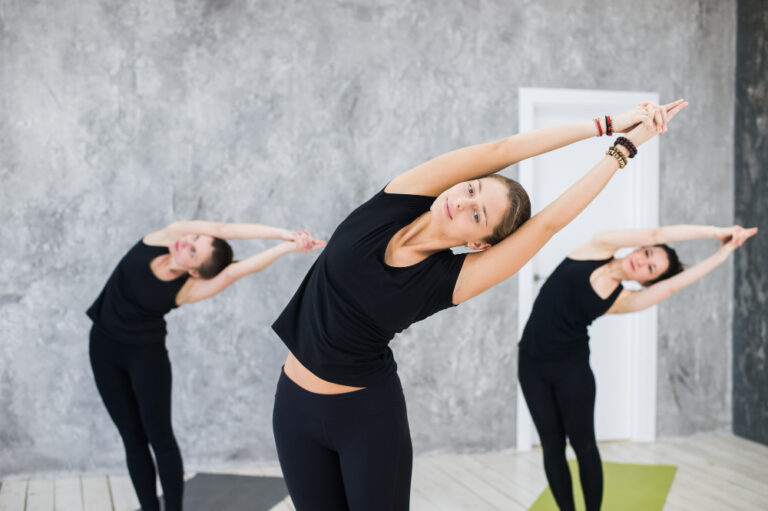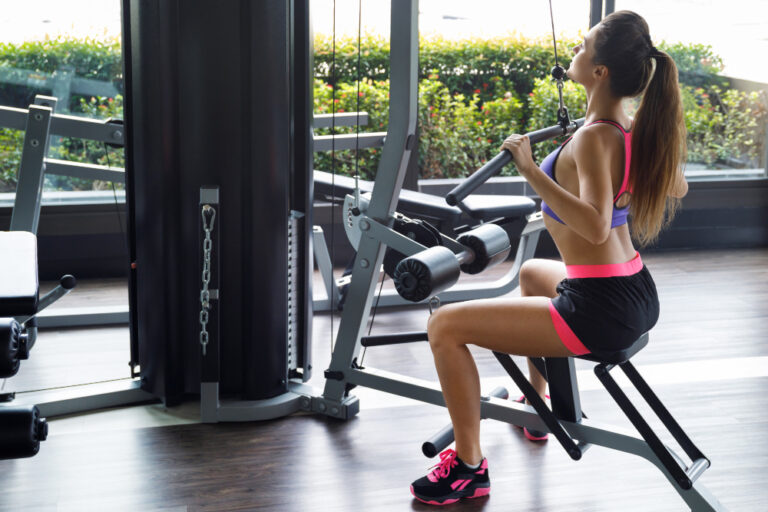No Equipment Necessary: The At-Home Circuit Workout You Can Do Anywhere
No Equipment Necessary: The At-Home Circuit Workout You Can Do Anywhere
Staying fit and healthy doesn’t always require a gym membership or fancy equipment. With the right knowledge and motivation, you can achieve remarkable results from the comfort of your own home. Say hello to the “No Equipment Necessary: The At-Home Circuit Workout You Can Do Anywhere” – a fitness routine that promises to transform your physique and boost your energy levels, all without any costly gear. Whether you’re a busy professional, a stay-at-home parent, or just someone looking for a convenient way to stay active, this circuit workout is tailored to suit your lifestyle. Let’s dive into the details and discover how you can embark on this empowering fitness journey without any equipment!

No Equipment Necessary: The At-Home Circuit Workout You Can Do Anywhere
Achieving a healthy and strong body doesn’t have to involve lifting heavy weights or complicated machinery. The “No Equipment Necessary: The At-Home Circuit Workout You Can Do Anywhere” is designed to utilize your body’s own resistance and leverage gravity to give you a challenging yet rewarding workout. This circuit routine incorporates a series of exercises that target different muscle groups while keeping your heart rate up. Not only does it help you build strength and endurance, but it also enhances your cardiovascular fitness.
Getting Started: Warm-Up
Every successful workout begins with a proper warm-up. Spend a few minutes performing dynamic stretches and light cardio exercises to get your blood flowing and your muscles ready for action. Jumping jacks, arm swings, and leg swings are great ways to prepare your body for the upcoming circuit.
Circuit Routine: Let’s Get Moving!
- Bodyweight Squats: Begin with a set of bodyweight squats. Plant your feet shoulder-width apart, keep your chest up, and lower yourself into a squat position. Push through your heels to return to the starting position. Repeat for 15-20 reps.
- Push-Ups: Strengthen your chest, shoulders, and triceps with push-ups. Perform as many push-ups as you can with proper form. If traditional push-ups are challenging, you can modify by doing knee push-ups.
- Plank Hold: Engage your core muscles with a plank hold. Rest on your forearms and toes, maintaining a straight line from head to heels. Hold this position for 30-60 seconds, focusing on keeping your core tight.
- Lunges: Perform forward lunges to work on your lower body. Step forward with one leg, lower your body, and then push back to the starting position. Alternate legs and aim for 12-15 reps per side.
- Tricep Dips: Find a sturdy chair or step and perform tricep dips. Place your hands on the edge of the chair, fingers facing forward. Bend your elbows to lower your body and then straighten your arms. Repeat for 12-15 reps.
- Mountain Climbers: Elevate your heart rate with mountain climbers. Start in a plank position and alternate bringing your knees towards your chest in a running motion. Do this for 30-45 seconds.
Understanding the At-Home Circuit Workout
An at-home circuit workout is a dynamic and versatile exercise routine that can be performed in the comfort of your own living space. Unlike traditional gym workouts that often require specialized equipment, an at-home circuit workout is designed to utilize your body’s natural resistance as the primary means of challenging your muscles.
This approach focuses on seamlessly transitioning from one exercise to another, creating a circuit that keeps your heart rate elevated and works multiple muscle groups. By combining strength training and cardiovascular exercises within a single routine, this workout optimizes efficiency and effectiveness. The beauty of an at-home circuit workout lies in its adaptability to your fitness level – whether you’re a beginner or a seasoned athlete, you can tailor the exercises to match your capabilities and gradually progress as you build strength and stamina.
One of the most appealing aspects of the at-home circuit workout is the absence of equipment requirements. Say goodbye to cumbersome weights and machines – this workout relies solely on the resistance provided by your bodyweight. This not only eliminates the need for costly gear but also offers the freedom to exercise anywhere, anytime. You can perform these exercises in your living room, backyard, or even during a travel trip, making it a truly versatile option.
The reliance on bodyweight also promotes functional fitness, enhancing your ability to perform everyday activities with ease. From squats to push-ups, each movement engages multiple muscle groups, leading to improved coordination and stability. Moreover, the combination of cardiovascular exercises within the circuit boosts your metabolism and contributes to fat loss, all while nurturing a stronger heart and lungs. In a world where time and accessibility are paramount, the at-home circuit workout stands as a beacon of convenience and efficiency, offering a holistic approach to achieving your fitness goals.

The Science Behind Bodyweight Training
Using bodyweight for resistance training is rooted in the principle of leveraging your own mass to create tension within your muscles. These exercises focus on controlled movements that challenge your muscles in a functional and natural manner, without the need for external weights. The concept is simple yet effective: as you push, pull, lift, or lower your body against gravity, your muscles respond by adapting and growing stronger. This approach not only builds muscle strength but also promotes joint stability and flexibility, making it a holistic way to enhance overall body fitness. The beauty of bodyweight training lies in its versatility – from classic push-ups to squats and planks, a wide array of exercises can be tailored to target specific muscle groups, ensuring a well-rounded workout.
Engaging multiple muscle groups simultaneously is a hallmark of bodyweight exercises. Unlike isolated movements performed on gym machines, these compound exercises require coordination and integration of various muscle fibers to execute each motion. For example, a push-up not only works your chest but also engages your triceps, shoulders, and core for stability. This holistic engagement promotes balanced muscle development and functional strength, mimicking the way your body naturally moves during daily activities. By challenging multiple muscles in a single movement, bodyweight exercises enhance not only muscle growth but also promote efficient calorie burn, aiding in weight management and boosting metabolism.
Circuit training, particularly when combined with bodyweight exercises, brings forth remarkable cardiovascular benefits. The dynamic nature of circuit workouts, where exercises are performed in quick succession with minimal rest, elevates your heart rate and enhances blood circulation. As you seamlessly transition from one exercise to another, your cardiovascular system works tirelessly to deliver oxygen and nutrients to your muscles. This not only improves heart health but also contributes to increased endurance and stamina over time. Circuit training’s combination of strength and cardio exercises within a single routine optimizes calorie burn and fat loss, making it an excellent choice for those aiming to shed excess weight while building lean muscle.
Preparing for Your Workout: The Warm-Up
Prior to diving into any workout, emphasizing the significance of a proper warm-up cannot be overstated. A well-structured warm-up serves as a crucial foundation for a safe and effective exercise session. It prepares your body for the physical demands of the workout ahead by gradually increasing your heart rate, blood flow, and body temperature. Dynamic stretches and light cardio exercises play a pivotal role in this preparatory phase, ensuring that your muscles, joints, and connective tissues are adequately primed for action. Incorporating leg swings, arm circles, high knees, or even a brisk walk or jog into your warm-up routine can help activate key muscle groups, improve flexibility, and set the tone for a productive workout session.
When it comes to preventing injuries and optimizing performance, a proper warm-up is your best ally. Dynamic stretches, which involve controlled movements that gently take your joints through their full range of motion, help increase joint lubrication and flexibility. These movements reduce the risk of strains and pulls that can occur when your muscles and joints are cold and stiff. Furthermore, as your heart rate gradually elevates during light cardio exercises, your body starts delivering oxygen and nutrients more efficiently to your muscles. This enhanced blood flow helps loosen up tight areas, reducing the likelihood of overexertion and injury. The warm-up also aids in mentally preparing for the workout, allowing you to focus on proper form and technique, which in turn promotes safer movement patterns. By dedicating a few minutes to a thorough warm-up, you lay the foundation for a successful and injury-free workout, ensuring that your body is ready to tackle the challenges ahead while minimizing the risk of strains, sprains, or other discomforts.

Tailoring the Workout to Your Fitness Level
For Beginners: Modifying Exercises
For those new to the at-home circuit workout, the journey begins with understanding the importance of starting at your own pace. Here are some valuable tips to help beginners ease into the routine and gradually build their strength and confidence:
- Reduced Repetitions: Begin by performing a lower number of repetitions for each exercise. This ensures that your muscles become accustomed to the movements without excessive strain.
- Knee Modifications: If standard push-ups or lunges are too challenging initially, consider doing knee push-ups or stationary lunges to reduce the intensity.
- Extended Rest: Allow slightly longer rest intervals between exercises and rounds. This provides ample time for recovery, ensuring a comfortable progression.
- Limited Range of Motion: Focus on executing exercises with a smaller range of motion. Over time, you can gradually increase the range as your flexibility and strength improve.
- Body Awareness: Pay close attention to your body’s response during each exercise. If you feel discomfort or pain, don’t hesitate to modify further or skip an exercise.
For Experienced Individuals: Intensifying the Circuit
For those who are more familiar with the circuit and seek an extra challenge, there are several strategies to take your workout to the next level:
- Add Plyometrics: Incorporate explosive movements like squat jumps, burpees, or plyometric push-ups to elevate the intensity and engage fast-twitch muscle fibers.
- Increase Repetitions: Aim to perform more repetitions for each exercise within the same timeframe. This boosts muscular endurance and promotes muscle growth.
- Shorten Rest Periods: Gradually decrease the rest time between exercises and rounds. This maintains an elevated heart rate and amplifies the cardiovascular benefits.
- Incorporate Props: Introduce simple props like resistance bands or small weights to selected exercises. This provides additional resistance for improved muscle engagement.
- Complex Movements: Combine exercises into dynamic sequences. For instance, flow from a plank into a push-up and then into a side plank for a comprehensive challenge.
Listening to Your Body’s Limits
Regardless of your fitness level, always prioritize listening to your body. Your body communicates its needs, limitations, and signals for caution. Never push through pain or discomfort that feels unusual or sharp. Here’s why this matters:
- Preventing Injuries: Ignoring your body’s signals can lead to injuries. It’s crucial to differentiate between the discomfort of pushing yourself and the pain that indicates potential harm.
- Sustainable Progress: Progress isn’t about sudden leaps but consistent and safe advancement. By honoring your body’s limits, you can steadily improve without setbacks.
- Long-Term Enjoyment: Sustainable fitness is a lifelong journey. By respecting your body’s needs, you create a positive relationship with exercise that lasts.
In all cases, remember that your journey is personal and unique. What matters most is making progress while enjoying the process.
Frequently Asked Questions (FAQs)
Q: Can beginners do this workout? A: Absolutely! This workout is suitable for all fitness levels. You can modify the exercises based on your capabilities.
Q: How long should I perform this circuit? A: Aim for 3-4 rounds of the circuit, with a 1-minute rest between rounds. As you progress, you can increase the rounds.
Q: Can I do this workout every day? A: It’s recommended to have rest days between workouts to allow your muscles to recover. Aim for 3-4 sessions per week.
Q: Will this workout help with weight loss? A: Yes, this circuit workout can contribute to weight loss when combined with a balanced diet and healthy lifestyle.
Q: Can I add weights if I have them? A: While this workout is designed as a bodyweight routine, you can certainly incorporate light weights to increase the challenge.
Q: How long until I see results? A: Consistency is key. With regular workouts and a healthy lifestyle, you can start noticing improvements in a few weeks.
Conclusion
Embrace the convenience and effectiveness of the “No Equipment Necessary: The At-Home Circuit Workout You Can Do Anywhere.” This workout is a testament to the fact that you don’t need a gym or fancy equipment to achieve your fitness goals. By harnessing the power of your body’s own resistance, you can sculpt a stronger physique and enhance your overall well-being. Remember, consistency and determination will be your best friends on this fitness journey. Get ready to sweat, feel the burn, and celebrate the amazing progress you’ll make right in the comfort of your own home.







